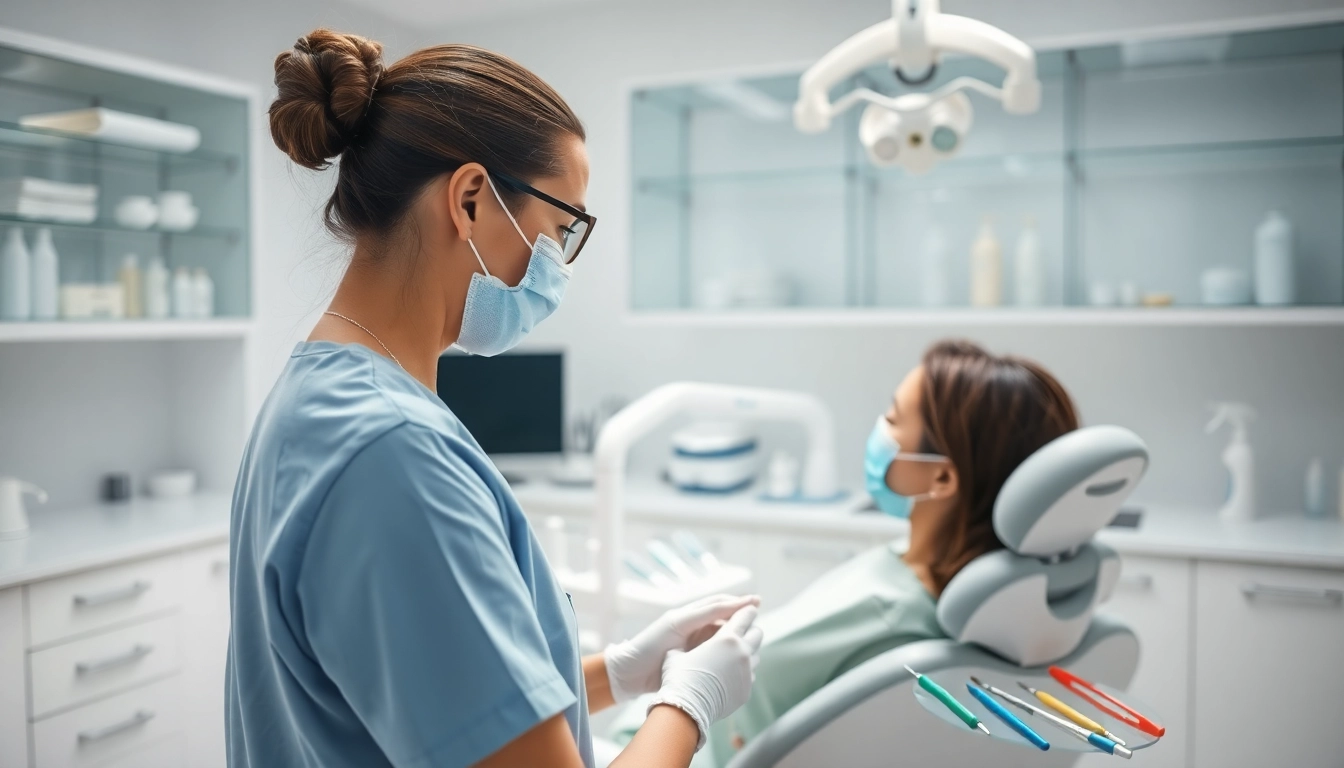The Importance of Hygiene in Dental Health
Hygiene plays a pivotal role in maintaining one’s overall health, particularly in the realm of dental health. The practices we engage in daily can significantly impact our well-being, and understanding the breadth of these practices can lead to better health outcomes. Good hygiene is not just limited to personal cleanliness; it encompasses actions and choices that help prevent disease and promote wellness. For more insights on maintaining optimal hygiene, consider the following aspects of dental care.
Understanding Hygiene and Its Impact
Hygiene refers to the conditions and practices that lead to cleanliness and help maintain health. It encompasses personal behaviors, such as brushing your teeth and washing your hands, and broader environmental conditions, like sanitation standards. Research has shown that improved hygiene practices can lead to a reduction in diseases and infections.
When applied to dental health, hygiene goes beyond the mere act of cleaning your teeth. It involves understanding how oral hygiene influences overall health. Poor dental hygiene can lead to cavities, gum disease, and even systemic health issues such as heart disease and diabetes. This connection emphasizes the importance of regular dental care and hygiene education.
Common Dental Hygiene Practices
Effective dental hygiene comprises several daily practices:
- Brushing: Recommended at least twice daily with fluoride toothpaste. Proper brushing techniques can reduce plaque buildup and prevent cavities.
- Flossing: Essential for removing food particles and plaque between teeth where toothbrushes cannot reach. Daily flossing is crucial for maintaining gum health.
- Mouthwash: Utilizing an antimicrobial or fluoride mouthwash can complement brushing and flossing by reducing bacteria in the mouth.
- Regular Dental Visits: Biannual check-ups and cleanings with your dentist ensure your dental health is monitored and maintained.
The Role of Hygiene in Preventing Disease
The link between good hygiene and disease prevention is well established. For instance, poor oral hygiene can lead to bacterial growth that contributes to gum disease and dental infections. These conditions may not only cause localized discomfort but can also result in more severe systemic issues, affecting heart health and creating complications in diabetic patients.
Maintaining proper dental hygiene reduces the risk of such diseases. Studies have shown that individuals who adhere to established dental hygiene practices experience fewer illnesses associated with poor oral health. Furthermore, educating communities about hygiene’s role in health can lead to more preventative action regarding various diseases.
Daily Hygiene Routines for Healthier Teeth
Effective Tooth Brushing Techniques
Tooth brushing is a critical aspect of daily dental hygiene. However, the effectiveness of brushing lies primarily in technique. Here are some steps to enhance your brushing routine:
- Use a soft-bristled toothbrush to avoid damaging gums.
- Apply a pea-sized amount of fluoride toothpaste.
- Brush at a 45-degree angle to the gum line, making gentle circular motions.
- Spend at least two minutes brushing, ensuring all surfaces of each tooth are cleaned.
- Replace your toothbrush every three to four months, or sooner if bristles become frayed.
Proper brushing can remove plaque and prevent its buildup, thereby lowering the risk of cavities and gum disease.
Flossing: Why It Matters for Hygiene
Flossing is often regarded as an optional step in dental hygiene, which is a misconception. Flossing plays a vital role in oral health, as it allows access to areas between teeth that toothbrushes cannot reach. Here is how to properly floss:
- Use about 18 inches of dental floss, winding most around your middle fingers, leaving an inch or two to work with.
- Gently slide the floss between your teeth using a back-and-forth motion.
- Curve the floss around the base of each tooth, making sure to go beneath the gum line.
- Use a clean section of floss as you move from tooth to tooth.
Consistency in flossing is essential; aim to incorporate it into your daily routine for optimal results in preventing cavities and gum disease.
Choosing the Right Dental Products
Selecting the right dental products can significantly influence your dental hygiene routine. Consider the following when making choices about your dental care:
- Toothbrush: Opt for a toothbrush that fits comfortably in your hand and allows easy maneuvering around your mouth. Electric toothbrushes can also be useful for ensuring adequate cleaning.
- Toothpaste: Look for toothpaste with fluoride and ADA approval to ensure it effectively combats cavities and strengthens enamel.
- Floss: Choose a type of floss that works best for your dental needs, whether it be waxed, unwaxed, or dental tape.
By equipping yourself with the right tools, you can enhance your self-care and contribute to better long-term oral health.
Mistakes to Avoid in Personal Hygiene
Common Misconceptions About Dental Hygiene
Many misconceptions about dental hygiene can lead to poor practices. For example, some believe that bad breath is solely caused by eating certain foods, ignoring the importance of regular brushing and flossing. Others may assume mouthwash can replace brushing, which it cannot. Understanding correct information about dental hygiene practices is crucial for maintaining healthy habits.
Impact of Poor Hygiene on Oral Health
The repercussions of neglecting dental hygiene can be dire. Statistics indicate that approximately 90% of adults in the U.S. have had at least one cavity in their lifetime, a result often attributed to insufficient oral hygiene. Poor hygiene can lead not only to tooth decay and gum disease but can also affect one’s self-esteem due to aesthetic concerns. These discomforts can discourage individuals from engaging socially, further impacting their quality of life.
Correcting Bad Habits for Better Hygiene
Many individuals develop bad habits unconsciously that can affect their dental hygiene. Some common issues include:
- Sipping sugary drinks throughout the day: This habit exposes teeth to sugar for prolonged periods, increasing the risk of cavities.
- Ignoring tooth sensitivity: Dismissing signs of tooth sensitivity can lead to severe issues if not addressed by a dental professional.
- Skipping dental appointments: Neglecting regular visits limits professional cleaning and can delay the detection of potential problems.
Correcting these habits involves consistency and commitment but pays off in terms of long-term health.
Community Awareness and Hygiene Education
Programs Promoting Dental Hygiene
Initiatives aiming to promote dental hygiene can significantly impact community health. Schools and community centers can implement programs focusing on proper brushing and flossing techniques. Dental health education should be an integral part of public health campaigns, emphasizing preventative care and regular check-ups to combat oral diseases.
Engaging Children in Good Hygiene Practices
Introducing hygiene education to children at an early age is essential for instilling lifelong habits. Fun and engaging activities, such as educational games or interactive hygiene workshops, can effectively interest children in their dental hygiene. Parents should be encouraged to engage in brushing together with their children, making it a shared experience that reinforces good practices.
Resources for Continued Learning
Continuing education about dental hygiene can empower individuals to maintain better health. Libraries, community health fairs, and online resources provide various materials, such as brochures and instructional videos, to educate the public. Dental offices may also have educational programs to help patients learn about hygiene and overall oral wellness.
Exploring the Future of Hygiene in Dental Care
Technological Innovations in Hygiene Products
Technology continues to advance in the field of dental hygiene, offering innovative products that improve effectiveness. Smart toothbrushes equipped with sensors can track brushing habits and offer real-time feedback, helping individuals develop better techniques. Innovations like these can make daily hygiene routines more engaging and instructive, and evidence-based.
The Integration of Sustainability in Hygiene Practices
More consumers are recognizing the importance of sustainability in their personal care products, including dental hygiene. Environmentally-friendly options, such as biodegradable toothbrushes or natural toothpaste, are becoming increasingly popular. Brands that prioritize sustainability may provide alternatives that are less harmful to the environment while still being effective for oral health.
Future Trends in Dental Hygiene Awareness
Looking to the future, there is a growing trend towards holistic dental care that embraces both physical and mental health. As awareness of the connection between oral health and overall wellness grows, more individuals are likely to view oral hygiene as part of a broader health strategy. This may lead to increased investment in community education to promote best practices and awareness of the importance of regular professional care.



